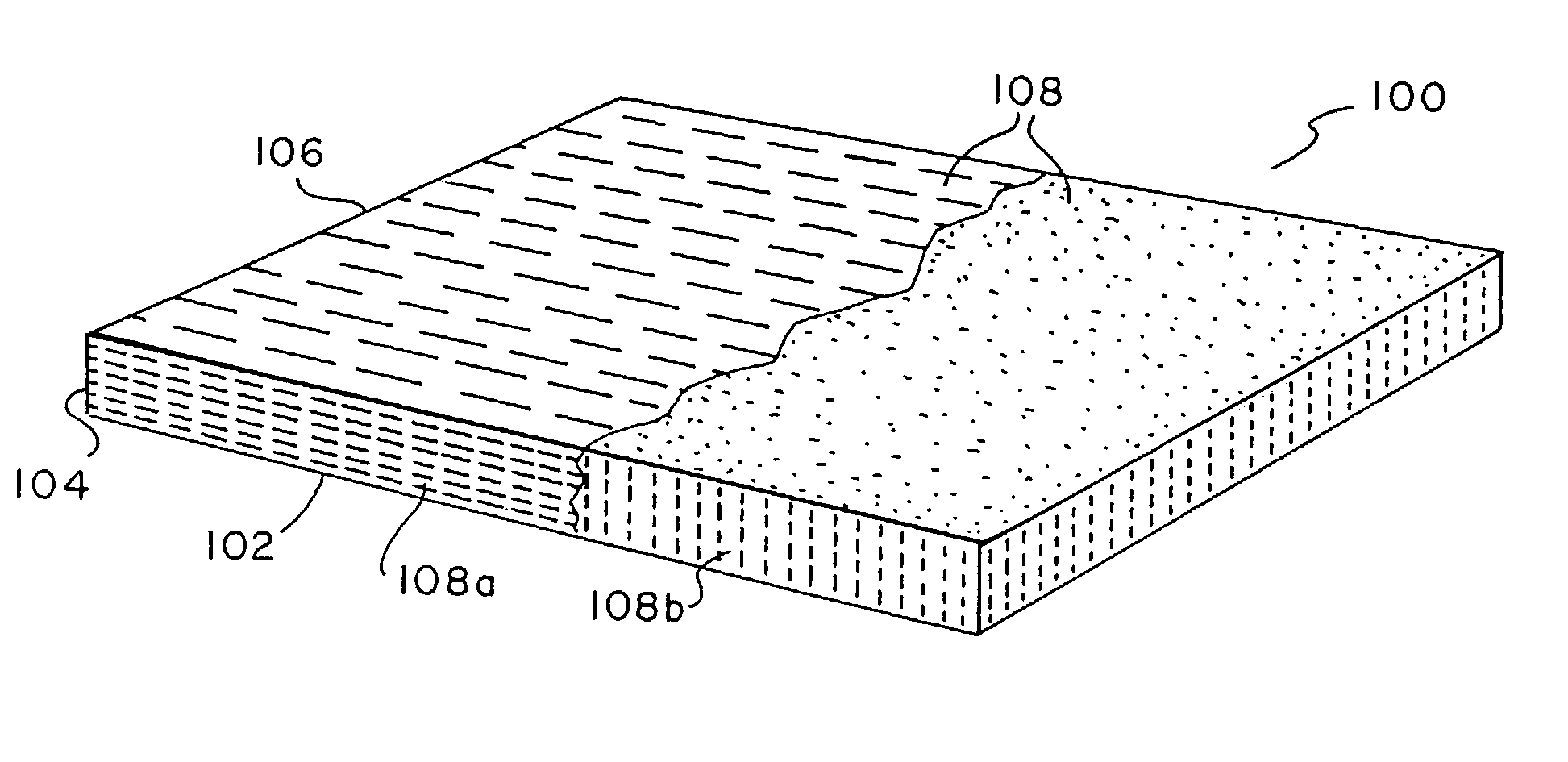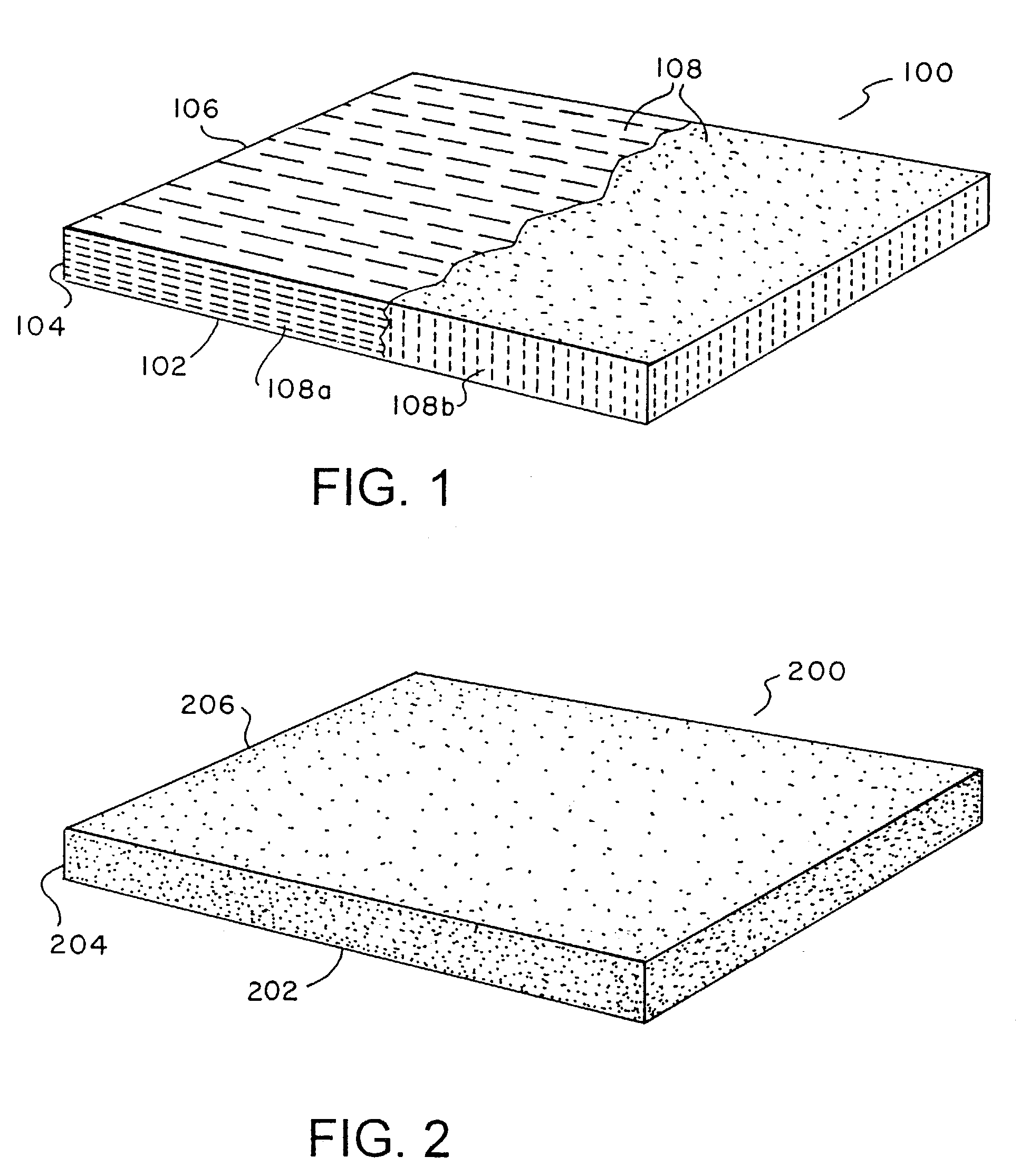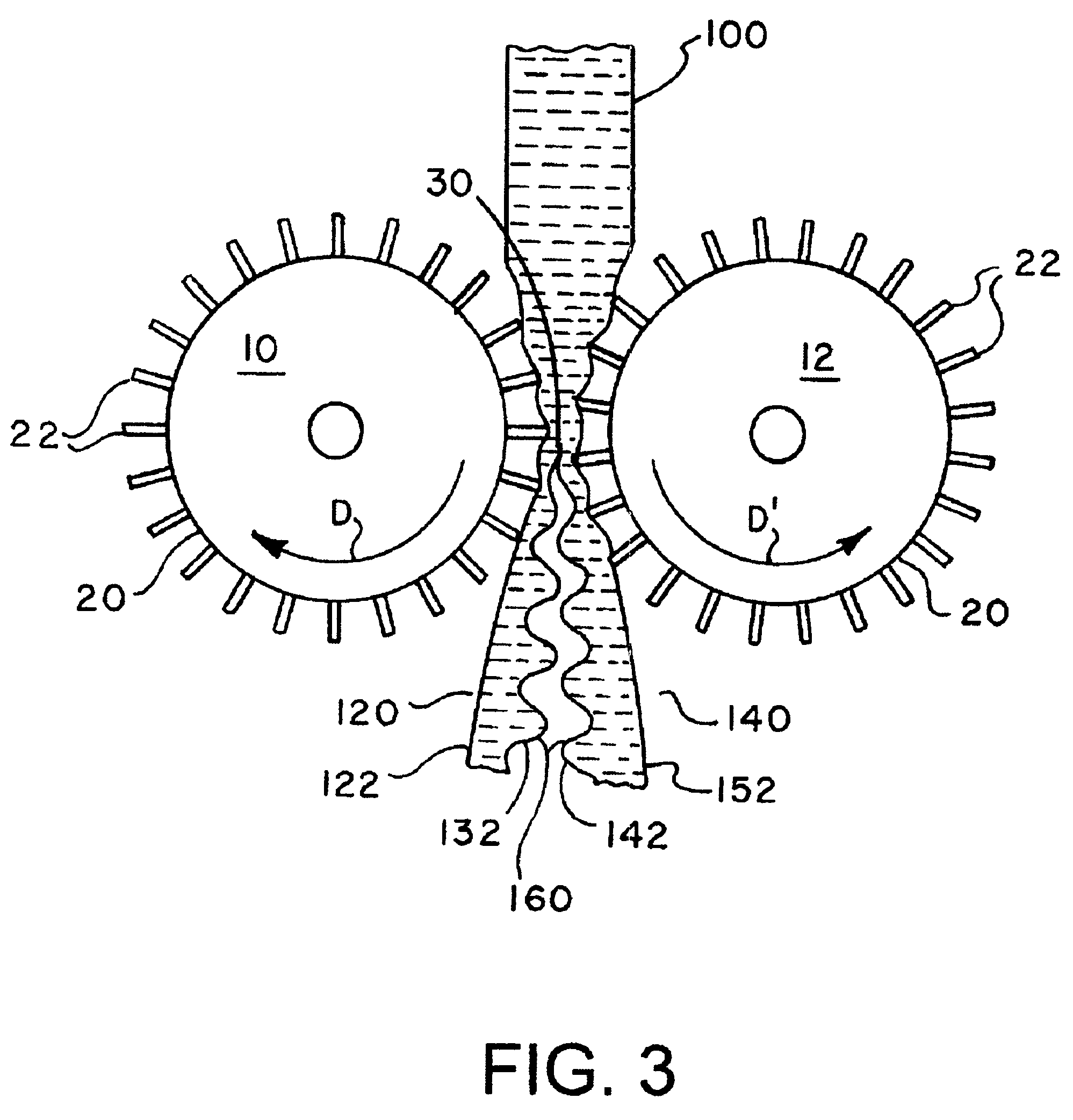Convoluted multi-layer pad and process
a multi-layer pad and flexible technology, applied in the field of flexible multi-layer pads and processes, can solve the problems of reducing the comfort of consumers, reducing reducing the cost of products, so as to improve the quality of products, reduce the density of foam, and improve the effect of compression and loft maintenan
- Summary
- Abstract
- Description
- Claims
- Application Information
AI Technical Summary
Benefits of technology
Problems solved by technology
Method used
Image
Examples
Embodiment Construction
[0021]REFERRING TO FIG. 1, a non-woven batt 100 has a longitudinal dimension 102, a lateral dimension 104 and a transverse dimension 106. The non-woven batt 100 may include a blend of different types of fibers 108 having varying diameters and deniers, and fibers which are hollow, solid and crimped. Blending different types of fibers 108 creates dead air spaces which contribute to the resiliency of the convoluted multi-layer pad 500 of the present invention (See FIGS. 3, 4 and 5) and lends to the integrity of the non-woven batt 100.
[0022]The fibers 108 of the non-woven batt 100 can be synthetic fibers which are known in the art, for example polyester and polypropylene. In an alternative embodiment, the fibers 108 are substantially synthetic fibers having a melting point in the range of about 189°–206°C. (300°–330°F.). In the preferred embodiment, the fibers 108 are polyester fibers having a melting point substantially in the above specified range. However, other synthetic fibers know...
PUM
| Property | Measurement | Unit |
|---|---|---|
| Dimension | aaaaa | aaaaa |
| Melting point | aaaaa | aaaaa |
Abstract
Description
Claims
Application Information
 Login to View More
Login to View More - R&D
- Intellectual Property
- Life Sciences
- Materials
- Tech Scout
- Unparalleled Data Quality
- Higher Quality Content
- 60% Fewer Hallucinations
Browse by: Latest US Patents, China's latest patents, Technical Efficacy Thesaurus, Application Domain, Technology Topic, Popular Technical Reports.
© 2025 PatSnap. All rights reserved.Legal|Privacy policy|Modern Slavery Act Transparency Statement|Sitemap|About US| Contact US: help@patsnap.com



